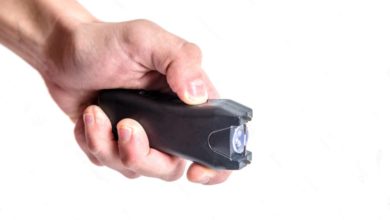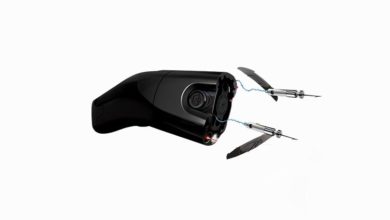How to Lock a Door From the Outside
KEY TAKEAWAYS
You’re heading out for a vacation or just stepping out for work, and you want to ensure your home stays secure. It’s crucial to know how to effectively lock a door from the outside. This might seem like a basic task, but there are several types of locks available with different mechanisms, each offering varying levels of security. From traditional keyed locks to advanced smart door locks, it’s important to understand the functionality and benefits of each type.
Additionally, extra security measures can further bolster your home’s defense against potential intruders. Therefore, we will discuss how to use these different locks effectively and provide tips on maintaining your home’s overall security system. By grasping these concepts, you’ll guarantee that when you turn that key or activate that app on your smartphone, you’re leaving your house as safely as possible. So let’s dive in and get savvy about securing our homes from the outside!
Understanding Different Types of Locks
Before we delve into how to lock a door from the outside, it’s crucial to grasp that there are various types of locks, each offering a different level of security. Knowing your way around these locks can significantly enhance your home’s safety and give you peace of mind.
Deadbolt Lock
The first type is the deadbolt lock. This is one of the most secure types, available in single-, double-, or one-and-a-half-cylinder versions. The single cylinder is locked or unlocked by a key on the outside and has a thumb turn on the inside, while the double cylinder uses keys both on the inside and outside, offering more security but posing potential safety issues during emergencies.
Padlocks
There are also padlocks, which are freestanding and portable. They come with either a key or a combination mechanism for unlocking.
Knob Locks
Knob locks are another common type in residential settings, especially on interior doors such as bathrooms and bedrooms. They have their locking mechanism within the knob itself but aren’t very secure since they can be easily broken off or picked.
Lever-Handle Locks
Let’s not forget about lever-handle locks used mainly for inner doors in commercial settings due to their ease of use, especially for people with physical disabilities. Cylinder lever locks offer high-security options, but these are typically more expensive.
Understanding these different types of locks provides you with insight into what kind would best suit your needs when it comes to securing your door from the outside – whether that involves simply turning a key or employing more complex mechanisms for enhanced protection.
Steps for Utilizing a Keyed Lock
To ensure your belongings are safe while you’re away, it’s crucial to correctly use a keyed mechanism. Understanding how to utilize this type of lock from the outside involves more than just inserting and turning the key; it requires an awareness of its technical aspects.
A typical keyed lock consists of a plug (the part where the key goes in), pins (which keep the plug from rotating without the correct key), and springs (which push the pins back into place when you remove the key). When your unique key is inserted, it pushes up on these pins to align perfectly with a line known as the shear line, which separates the plug from its surrounding casing. Once all pins align with this shear line, you can turn your key inside the plug—this rotates both parts simultaneously, unlocking or locking your door. Here’s how to properly use one:
Step 1: First, insert your uniquely cut key into the lock, ensuring it fully enters.
Step 2: Apply slight pressure and rotate clockwise or counterclockwise depending on whether you want to lock or unlock respectively. A common mistake is using excessive force, which could damage both your keys and locks over time.
Remember not to rush while engaging in this process; hasty movements might result in the misalignment of components within these delicate mechanisms, leading to later jamming issues. Regular maintenance, like lubricating moving parts, also prolongs their lifespan, preventing unnecessary replacements.
While mastering a keyed lock may seem daunting initially due to its intricate design, with practice comes proficiency. It’s about understanding how each component interacts within this mechanical system and applying appropriate techniques when operating them—this ensures not only security but longevity for your lock mechanisms as well.
Extra Security Measures
While you’ve got the basics of using a keyed lockdown pat, it’s important to consider additional security measures to enhance your home’s safety. This goes beyond simply locking up when you leave; it’s about employing layered security tactics that fortify your home against potential intruders.
The first step in bolstering your exterior door security is to choose high-quality locks. Deadbolts are considered more secure than spring latch locks as they’re harder to pick or force open. Opt for a double-cylinder deadbolt if your door has glass panels; this type requires a key to unlock from both inside and outside, making it difficult for burglars to break the glass and turn the lock.
Additionally, reinforcing your door frames and hinges can make a significant difference. Most intruders rely on brute force entry methods like kicking in doors. Reinforce these weak points with strike plates or hinge bolts and consider upgrading to solid wood or metal doors, which provide greater resistance against forced entry.
Another smart addition is an outdoor surveillance system such as CCTV cameras, which act as a deterrent and evidence collector should an incident occur. Modern systems offer remote access capabilities, allowing you to monitor your home from anywhere via smartphone apps.
Consider integrating smart technology into your home security setup. Many devices are available today that allow you to control locks remotely, receive alerts if someone tries to tamper, or even integrate them with other smart devices in your house for complete automation. By taking these steps towards improving exterior door security, not only will you be able to lock up confidently but also ensure peace of mind, knowing that extra measures have been taken to safeguard your property.
Smart Locks and Their Benefits
Ever wondered how much easier life would be if you didn’t have to worry about losing your keys or getting locked out? Welcome to the world of smart locks. These devices offer an innovative solution for securing your doors from the outside, bringing convenience and enhanced security into one package.
Smart locks replace or augment traditional key-based locks with digital technology that can be controlled remotely. They’re designed with high-tech features like Bluetooth connectivity, remote access via mobile apps, and unique user codes for different family members. With these advanced mechanisms in place, you don’t need a physical key. Instead, your smartphone is your key, giving you complete control over who enters your home and when.
The benefits of smart locks extend beyond convenience. They provide a higher level of security than traditional locks due to their complex encryption systems, which are difficult to hack. Some models even have built-in alarms that trigger if someone attempts forced entry or incorrectly inputs the passcode multiple times.
Moreover, the ability to monitor access in real-time gives homeowners peace of mind as they can track exactly who is coming and going at all times. This feature is particularly useful for people who often travel or those who want extra property protection while they’re away.
The beauty of smart locks lies not only in their functionality but also in their seamless integration with other smart home devices. For instance, a smart lock can sync up with your security camera system, allowing you to view live footage whenever someone unlocks the door.
Without concluding remarks, let’s say that adopting this technology provides an efficient way to enhance safety measures at home while offering an unparalleled level of convenience.
Tips for Maintaining Your Home’s Security
Ensuring your home’s security requires consistent efforts, and it’s not just about installing advanced gadgets but also about maintaining them properly and adopting smart practices. It’s essential to keep an eye on the existing lock systems in your home. For instance, if you notice any tampering or wear and tear on your door locks, it might be time for a replacement.
Regular maintenance checks are crucial for electronic or smart locks. Make sure the batteries are always charged so that they don’t die unexpectedly, leaving you locked out of your own house. Additionally, periodically update the software to ensure your system isn’t vulnerable to hackers.
When it comes to keys, never hide spare ones under doormats or flowerpots – these are the first places burglars look. Instead, consider investing in keyless entry systems or give a spare key to someone trustworthy who lives nearby. Security doesn’t end at locking doors, though; windows should also be secured properly as they’re often seen as an easy target by intruders. Always lock them when not in use, and consider adding window sensors that will alert you if someone tries to force them open.
Lighting plays a significant role, too – criminals prefer working in darkness. Therefore, well-lit homes can deter potential burglars. Use timers for indoor lights when away from home and install motion-sensor outdoor lights around the premises, providing no place for invaders to hide. Remember that all these tips go hand-in-hand with having a robust external door lock system – whether traditional or smart lock-based – because everything starts from there: how securely you can lock up before stepping out!
Frequently Asked Questions
What can I do if I lose the key to my door lock?
If you’ve misplaced your door, lock key, don’t panic. First, try to find a spare if you have one. If not, consider contacting a professional locksmith who can either pick the lock or create a new key for it. Alternatively, if the lock is part of a doorknob or handle set, you could purchase and install a replacement. Be sure to keep track of this new key to avoid future inconveniences. For high-security locks, consult with professionals, as these require specialized skills to unlock or rekey.
How do I handle a situation where my door lock is jammed?
First, don’t force the key into a jammed lock, as it may break. Apply a lubricant like graphite powder or silicone spray into the keyhole to help loosen any stuck parts. If this doesn’t work, you’ll need to disassemble the lock. Unscrew and remove the doorknob, then pull out the cylinder. Inspect for and remove debris causing the jam. If there’s significant damage or wear, consider replacing components or even the entire lock. Always consult with a professional locksmith if unsure.
Can I install an outside door lock alone, or do I need professional help?
Yes, it’s entirely possible to install an outside door lock by yourself. You’ll need tools like a screwdriver, drill, and a hole saw kit. The process involves drilling holes in the appropriate places on your door and frame, inserting the lock mechanism into these holes, then securing it with screws. However, if you’re not comfortable with this level of DIY or if your door requires advanced hardware fitting, professional help might be beneficial.
Which type of lock provides the best protection against lock picking?
When considering the best protection against lock picking, a deadbolt lock typically offers superior security. Specifically, a double-cylinder deadbolt is highly resistant to picking due to its complex internal mechanism and requirement for a key on both sides. However, remember that no lock is entirely pick-proof; it’s about making your door more challenging to breach. Regular maintenance and updating of your locks can also enhance their resistance to picking attempts. Always research thoroughly before choosing any locking system.
Are there any legal issues or restrictions I should know when installing outside door locks?
Yes, there can be legal issues when installing external door locks. Ensure your lock complies with local building codes and fire safety regulations. In some jurisdictions, ‘deadbolt’ locks aren’t allowed on certain doors due to the risk of entrapment during emergencies. Additionally, if you’re renting, you’ll need permission from your landlord before altering any locks. Consult a professional locksmith or local authority to avoid potential liabilities or legal infringements.
You’ve got the basics now – understanding different locks, using a keyed lock, boosting security, and even exploring smart locks. Remember, maintaining your home’s security isn’t a one-time job. It requires regular attention and updates. Stick with it, and you’ll keep your fortress secure from the outside world. Knowledge is power; use yours wisely to safeguard what’s precious.




